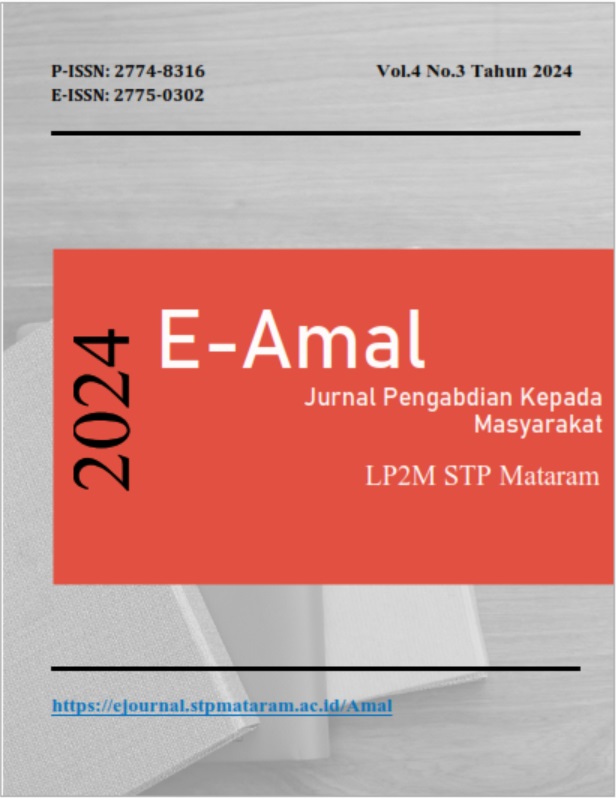PERSEPSI MITRA BINAAN TERHADAP PROGRAM PEMBERDAYAAN UMKM TAMAN PURI AYU OLEH PT PLN INDONESIA POWER UBP JERANJANG DI DESA TAMAN AYU KABUPATEN LOMBOK BARAT
Abstract
This study aims to determine the perception of fostered partners on the Taman Puri Ayu MSME empowerment program by PT PLN Indonesia Power UBP Jeranjang in Taman Ayu Village, West Lombok Regency. The method used in this research is descriptive qualitative. The data collection techniques used were observation, in-depth interviews, and documentation. Determination of informants in this study used purposive sampling technique, and involved four main informants and two supporting informants. The data analysis technique formulated is Miles and Huberman's with the stages of data reduction, data presentation, and conclusion drawing/verification. The results of this study indicate that the Taman Puri Ayu MSME empowerment program by PT PLN Indonesia Power UBP Jeranjang has several positive impacts, including increased business management skills, product packaging and marketing, which are obtained through training, mentoring, and coaching provided by PT PLN Indonesia Power UBP Jeranjang. Thus making the fostered partners feel more confident in developing their business, especially in expanding the local product market. In addition, the support facilities provided also help increase production capacity, although there are obstacles in communication and fulfillment of production equipment needs, which are still challenges that need to be improved. Overall, the program is considered beneficial, but still requires improvement in certain aspects
References
[2] Daryanto, & Rahardjo, M. (2016). Teori Komunikasi. Gava Media
[3] Hamid, H. (2018). Manajemen Pemberdayaan Masyarakat. De La Mecca
[4] Harahap, S. R. (2021). Hambatan-Hambatan Komunikasi. Jurnal Al-Manaj, 1(1), 56-62
[5] Mahendra, B. (2019). Pemberdayaan Masyarakat Melalui Program CSR PT. Angkasa Pura I Yogyakarta (Studi Kasus UMKM Madu Hutan Raya Dan Mina Kembar). Jurnal Agercolere, 1(2), 30–36. https://doi.org/10.37195/jac.v1i2.62
[6] Mardikanto, T., & Poerwoko, S. (2014). Pemberdayaan Masyarakat Dalam Perspektif Kebijakan Publik. Alfabeta.
[7] Moleong, L. J. (2015). Metode Penelitian Kualitatif. Remaja Rosdakarya.
[8] Mulyana, D. (2017). Ilmu Komunikasi Suatu Pengantar. PT Remaja Rosdakarya.
[9] Putri, F. I. A. (2020). Persepsi Mahasiswa Universitas Mataram Tentang Catcalling Sebagai Pelecehan Seksual Secara Verbal. [Skripsi]. Universitas Mataram.
[10] Setyawati, A. (2017). Keunggulan Bersaing Dan Kinerja UMKM Tinjauan Empirik Terhadap Pengembangan Usaha. Media Nusa Creative.
[11] Sugiyono. (2022). Metode Penelitian Kuantitatif, Kualitatif, dan R&D. Alfabeta.
[12] Sujarweni, V. W. (2014). Metodologi Penelitian Bisnis & Ekonomi. PUSTAKABARUPRESS
[13] Syarifuddin, M. C. (2020). Dampak CSR terhadap Kesejahteraan Masyarakat Binaan Ternak PT. PLN Tanjung Jati B. Journal of Development Economics, 3(1), 625-633. https://doi.org/10.15294/efficient.v3i1.35956
[14] West, R., & Turner, lynn h. (2017). Pengantar Teori Komunikasi Analisis dan Aplikasi. Salemba Humanika.
[15] campus.quipper.com. (2024). Focus Group Discussion (FDG). [Diakses pada 18 September 2024] dari, https://campus.quipper.com/kampuspedia/focus-group-discussion-fgd












